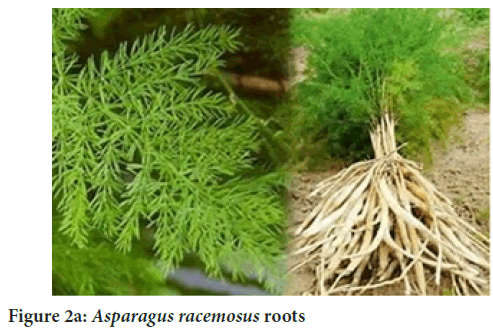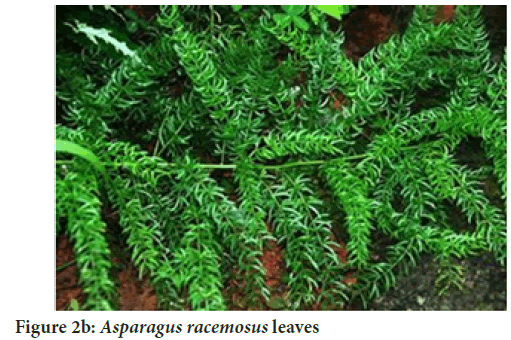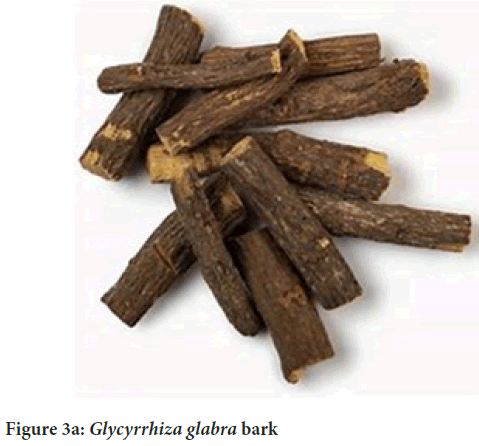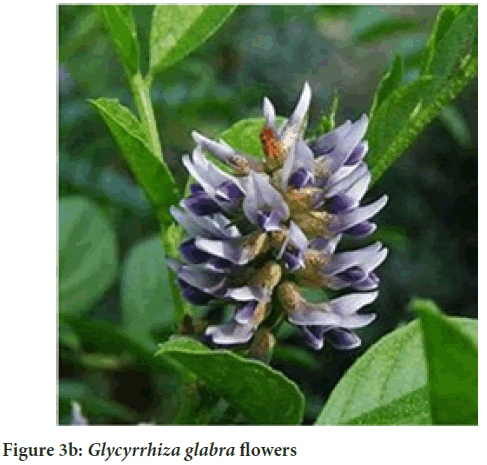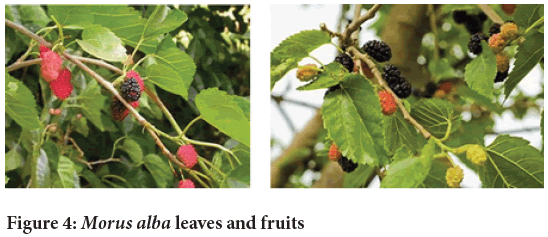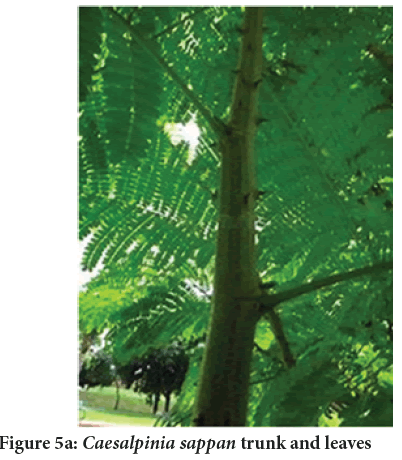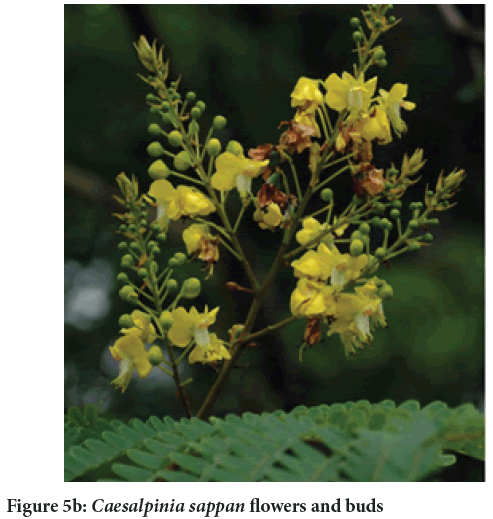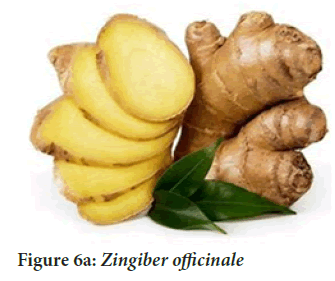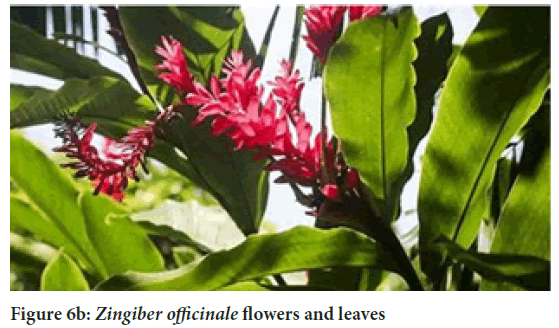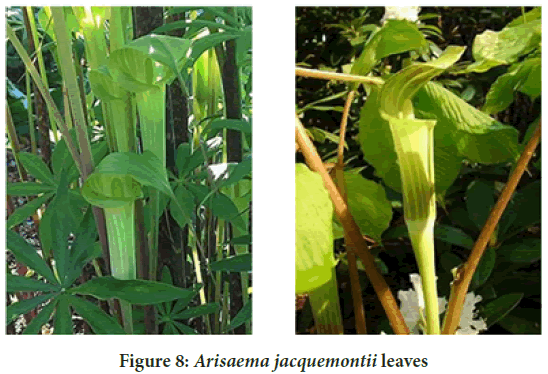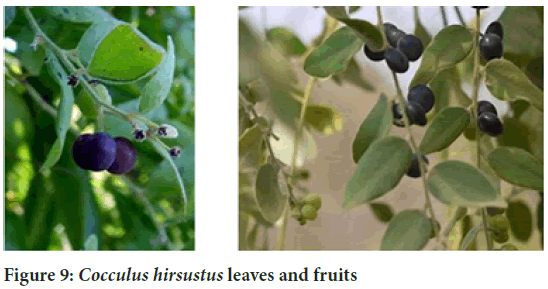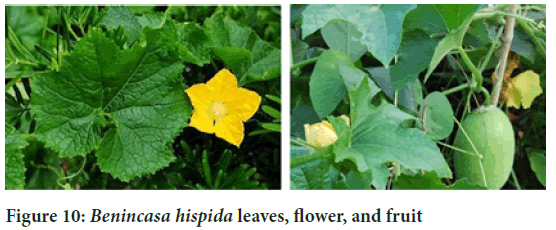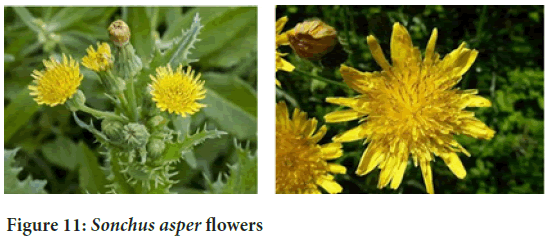Review Article - (2022) Volume 13, Issue 7
Abstract
Two-thirds of the world’s plant species, according to some research, have therapeutic potential; many medicinal plants have significant antioxidant activity. Antioxidants reduce oxidative stress in cells, making them useful in the treatment of illnesses such as cancer, cardiovascular disease, and inflammatory diseases in humans. This study examines the antioxidant capacity of extracts from the stems, roots, bark, leaves, fruits, and seeds of a variety of important medicinal plants.
Keywords
Medicinal plants, Antioxidant property, Pharmacological activities
Introduction
The recent advances in biology’s understanding of free radicals and Reactive Oxygen Species (ROS) are emerging in a medic al revolution that promises a new transformation of health and illness control. Electromagnetic radiation, cosmic radiation, UV-light, ozone, cigarette smoking and low wavelength electromagnetic radiation transport chain and β-oxidation of fat are examples of external sources of reactive oxygen species. Oxidants on the other hand, assault macromolecules such as protein, DNA, and lipids, causing cellular/tissue damage.
Antioxidants are chemicals that dispose free radical species, scavenge them, suppress their synthesis of formation of those free radicals, or oppose their action. There is an optimal pro-oxidant: Antioxidant equilibrium in a normal cell. When the production of oxygen species is boosted or antioxidant levels are depleted, however this equilibrium can be changed towards the pro-oxidant. This is referred to as “oxidative stress,” and it can cause substantial cell damage if the stress is severe or continuous. Oral Squamous Cell Carcinoma (OSCC), the most prevalent oral cancer, has a wide spectrum of clinical symptoms and accounts for more than 90% of all oral malignancies (Hema KN, et al., 2017). Exogenous and endogenous antioxidants typically work together to achieve a balance between antioxidation protection and oxidant generation, which is thought to be vital in maintaining a healthy biological system (Dias TR, et al., 2020). Increased levels of oxidants/Reactive Oxygen Species (ROS) make a path for oxidative stress, which has been linked to the creation of a wide range of chronic illnesses, including cardiovascular and periodontal disorders (Pampani P, et al., 2021). Herbal antioxidants have been successfully used as rejuvenators in Indian systems of alternative medicine for several millennia. Several studies have demonstrated that various herbal remedies include a variety of compounds, many of which have antibacterial and radical scavenging characteristics that can protect the human body against infections as well as cellular oxidation events (Parham S, et al., 2020). Rasaynas are a type of non-toxic polyherbal medical preparation that boosts immunity, prevents illness, and promotes health and life.
Literature Review
This review includes a brief description of a report on plants with antioxidant and anti-hyperlipidemic potential. This review deals with the antioxidant potential of some medicinal plants such as Bauhinia purpurea, Morus alba L, Caesalpinia sappan L, Nannochloropsis oculata, Gracilaria gracilis, Aspargus racemosus, Arisaema jacquemontii, Zingiber officinale, Cocculus hiesutus, Benincasahispida,Sonchusasper,Glycyrrhizaglabra.
Bauhinia purpurea (l) bark
Synonym: Orchid tree, purple bauhinia, camel’s foot (PFAF, 2021).
Family: Fabaceae
Chemical constituents: Flavonoids, alkaloids, steroids, triterpenoids, fatty alcohol, acid, and aster, glycerol’s, phenols chromone, sugar (Kuo YH and Yeh MH, 1997).
Medicinal and antioxidant property: Antidiabetic, antimalarial, antifungal, antimycobacterium, antimicrobial, anti-diarrheal, antiepileptic, antioxidant, anti-ulcer, anti-hyperlippidemic, anti-cancer, anti-obesity, hepatoprotective, cytotoxic, amelioration of hyperthyroidism, fibrolytic, anti-inflammatory and anti-arthritic activity, wound healing, nephroprotective. The antioxidant activity was measured by 2,2-diphenyl-1-picrylhydroxyl solution (DPPH) radical scavenging assay and the in vitro studies showed considerably antioxidant activity, mainly based a scavenging of oxygen radicals. These flavonoids mainly inhibit of low-density lipoproteins oxidation, likely due to their reductive capacity and protein-binding properties. Hence Bauhinia purpurea are to be claimed as good antioxidant properties (Vijayan R, et al., 2019; Shajiselvin CD, et al., 2011) (Figure 1).
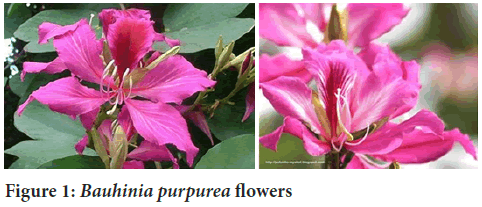
Figure 1: Bauhinia purpurea flowers
Asparagus racemosus linn (shatavari)
Synonym: Satavar, shatavari, shatamull (Bhat HP, et al., 2015).
Family: Asparagaceae
Chemical constituents: Asparagus are a group of steroidal saponins. It also consists number of vitamins such as A, B1, B2, C, E, Mg, P, Ca, Fe and folic acid. Other constituents of asparagus are essential oils, asparagine, arginine, tyrosine, flavonoids (kaempferol, quercetin and rutin), resin and tannin (Chauhan M, 2019).
Medicinal and antioxidant property: The crude drugs of asparagus roots are mainly used for increasing the secretion of milk and for improve the appetite in lactating women. It’s also useful in dysentery, tumors, inflammation, biliousness, leprosy, epilepsy, and night blindness. In unani system roots are used as laxatives, tonic, aphrodisiac, galactagogue and in disease of kidney and liver. Asparagus racem- osus are also used against jaundice. It is widely used as antioxidant, anti-stress effect, anti-ulcer, and wound healing property (Figures 2a and 2b).
Figure 2a: Asparagus racemosus roots
Figure 2b: Asparagus racemosus leaves
Antioxidant properties of this plant have become a vast interest due to their possible uses as natural additives to substitute synthetic ones. Thus, the result obtained in the present study showed that the methonolic extract of the root of Asparagus racemosus contains the maximum antioxidant compound which can scavenge different Reactive Oxygen Species (ROS) and free radicals under in vitro conditions (Chauhan M, 2019; Karuna DS, et al., 2017; Visavadiya NP and Narasimhacharya AVRL, 2009; Singla R and Jaitak V, 2014).
Glycyrrhizaglabra
Synonym: Liquorice, black sugar
Family: Fabaceae
Chemical constituents: The triterpene saponins are the major characteristic constituents of liquorice, being responsible for sweet taste. Glycyrrhizin, glycyrrhiric acid, yellow colour is due to flavonoid content such as flavanones, flavones, flavanonols, chalcones, isoflavans, isoflavenes, isoflavones and isoflavanones.The major flavonoids are glucosides of liguiritigenin and isoliquiritigenin such as liquirtin, isoliquiritin, liquiritin apioside and licuraside. Some phenolic compounds are also present. Many volatile components are geraniol, pentanol, hexanol, teroinen-4-ol and α-terpineol. G. glabra is also rich in propionic acid, benzoic acid, furfuraldehyde, 2,3-butanediol, furfuryl formate, maltol, 1-methyl-2-formylpyrrole and trimethylpyrazine (Batiha GS, et al., 2020).
Medicinal and antioxidant property: The extracts are used in food and pharmaceutical industries, also in the manufacture of functional foods and food supplements. It’s also used as traditional Chinese medicine; it’s used for the treatment of gastrointestinal problems, cough, bronchitis, and arthritis and widely used to treat gastritis, peptic ulcers, respiratory infections, and tremors in folk medicine. Used as food additives that is as flavors and sweetening agents and used as flavoring agent for American type tobacco, chewing gum, candies, baked goods, ice cream, and soft drinks. It’s also used as beer and fire extinguishers, and skin depigmentation agent (Figures 3a and 3b). Total antioxidant activity determination by ferric thiocyanate method, Ferric cyanide (Fe3+) Reducing Antioxidant Power assay (FRAP), Cupric Ions (Cu2+) reducing power-cupric assay, chelating activity on ferrous ions (Fe2+), hydrogen peroxide scavenging activity, DPPH free radical scavenging activity, ABTS radical decolourization assay, superoxide anion radical scavenging activity, measurement of DMPD and scavenging ability (Murray MT, 2020).
Figure 3a: Glycyrrhiza glabra bark
Figure 3b: Glycyrrhiza glabra flowers
Morus alba l. (tut)
Synonym: White mulberry (The plant list, 2012).
Family: Moraceae
Chemical constituents: Tut fruits contain phenolics and flavonoids contents, vitamin, fat (mainly linolic acid, palmitic acid, oleic acid) and minerals, and its leaves have fixed oil, carbohydrate, protein, tannin, alkaloids, sterol, flavonoids, glycosides and saponin (Chen CY, et al., 2020; Yang Y, et al., 2014).
Medicinal and antioxidant property: Fruits, root and stem barks and leaves of Tut plant have been used in the treatment of inflammation, jaundice and hepatitis, cancer, diabetes, dislipidemia, diarrhea, dyspepsia, edema, fever, headache, hypertension, purgative, anthelminthic and wounds (Figure 4). Leaves of Tut plant have been reported to use in the treatment of depression, anxiety, cerebral ischemia, hepatic disease, cancer, diabetes, dislipidemia and ulcer. The extract was tested by studying the inhibition of radiation induced lipid peroxidation in rat liver microsomes. It shows activity through free radical scavenging property (Wang W, et al., 2012; Przeor M, et al., 2020; Kim DS, et al., 2014).
Figure 4: Morus alba leaves and fruits
Caesalpinia sappan L
Synonym: Biancaea sappan L(Flowers of India, 2021; India biodiversity, 2021)
Family: Caesalpiniaceae
Chemical constituents: There are nine components isolated from heartwood of Caesalpinia sappan L. They are brazilein, t-lyoniresinol, stearic acid, stigmasterol, E-3,3-dimethyoxy-4,4-dihydroxystilbene,(-)-syfingaresinol, protosappanin A, and brazilide (Zhao N, et al., 2020).
Medicinal and antioxidant property: Used in the treatment of non-specific leucorrhoea (Post IUD). It helps in stopping bleeding following IUD insertions. It’s used in the preparation of toothpaste and tooth powder in India. It is a powerful astringent, haemostatic, healing properties which help in stopping bleeding in gums and use gives firmness and strength to the gums and hence, it is useful in mobile teeth, aphthous ulcers, and stomatitis and gum erosions. It is used as constipating, sedative, astringent, frigerant, depurative. It is useful in witiated conditions of pitta, burning sensation, wounds, ulcers, leprosy, skin diseases, diarrhea, dysentery, epilepsy, convulsions, menorrhagia, leucorrhea, diabetes, haemoptysis, haemorrhages, stomatopathy and odontopathy. It is used in blood vitalizing activity and used in the treatment of toxic side effects resulting from radiation and chemotherapy (Figures 5a and 5b).
Figure 5a: Caesalpinia sappan trunk and leaves
Figure 5b: Caesalpinia sappan flowers and buds
It is used for disturbances of menstrual functions. It also acts as antimalarial and antianaemic, abortifacient. Their DPPH radical scavenging activity and Folin-Ciocalteau phenolic content were used to create an antioxidant profile. The results revealed that alkaloid, tannin, and saponin were present in every section of the wood. Except for branch sapwood, triterpenoid and flavonoid were identified in all parts of the wood (Zhao N, et al., 2020).
Zingiber officinale (ginger)
Synonym: Ginger (Freethesaurus, 2021).
Family: Zingiberaceae
Chemical constituents: Ginger rhizomes consist of carbohydrates, lipids, terpenes and phenolic compounds. Terpene includes zingiberene, β-bisabolene, α-farneses, β-sesquiphellandrene, and α-curcumene some phenolic components are gingerols, paradols, and shogaol found in large quantity. Other shagol related compounds include 6-paradol, 1-dehydrogingerdione, 6-gingerdione, 10-gingerdione, 4-gingerdiol, 6-gingerdiol, 8-gingerdiol and 10-gingerdiol and diarylheptanoids (Mao QQ, et al., 2019; Liu Y, et al., 2019).Medicinal and antioxidant property: It helps to reduce nausea, prevent nausea due to chemotheraoy, motion sickness, and surgery. It’s also essential remedy for nausea during pregnancy. It’s widely used for various GI problems such as morning sickness, colic, upset stomach, gas, bloating, heartburn, flatulence, diarrhea, loss of appetite, and dyspepsia. Other uses are pain relief for arthritis, muscle soreness, chest pain, low back pain, stomach pain and menstrual pain; treat upper respiratory tract infections, cough, and bronchitis and anti-inflammatory agent, lowers blood pressure (Figures 6a and 6b). It also used in treatment of cold and flu. The anti-oxidant capabilities of ginger (Zingiber officinale) were assessed using three parameters: Antioxidant capacity, total phenolic and flavonoid content, and phenolic acid identification in Water Extract (WEG) and Ethanol Extract (EEG). FRAP, CUPRAC assay, Fe2+ chelating ability, DPPH and DMPD radical scavenging activities were used to determine antioxidant capacity. Folin Ciocalteu’s technique was also used to determine total phenolic and flavonoid content in both extracts. The HPLC-MS/MS method was used to identify the phenolic acids. In all experiments, the data showed that EEG had higher antioxidant activity than WEG. In all experiments, the data showed that EEG had higher antioxidant activity than WEG. According to HPLC-MS/MS study, ginger contains at least eight distinct phenolic acids, with pyrogallol p-hydroxybenzoic acid, ferulic acid, and p-coumaric acid being the most prevalent in both extracts. This study clearly proved that ginger extracts have potent antioxidant activities, and that their consumption can help to prevent or delay the onset of diseases caused by oxidative stress in the absence of antioxidant supplements (Mbaveng AT and Kuete V, 2017; Stoilova I, et al., 2007).
Figure 6a: Zingiber officinale
Figure 6b: Zingiber officinale flowers and leaves
Nannochloropsis oculate and Gracilaria gracilis
Synonym: Picochlorum oculate, Flagellaria gracilis (stack house) (Wilson AJ and Critchley AT, 1997; Hussein HA, et al., 2020)
Family: Monodopsidaceae, Gracilariaceae
Chemical constituents: These algae have chlorophyll a, chlorophyll b and chlorophyll c. They have high concentration of pigments such as astaxanthin, zeaxanthin and canthaxanthin. It includes polysaccharides, polyunsaturated fatty acids, polyphenolic compounds, antioxidants, peptides, essential vitamins, and minerals (Figure 7).
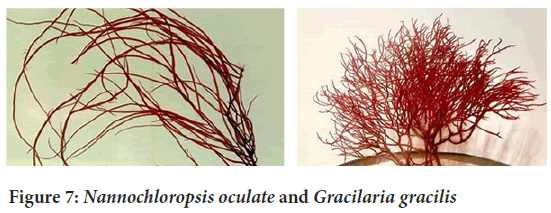
Figure 7: Nannochloropsis oculate and Gracilaria gracilis
Medicinal and antioxidant property: This exhibits antioxidant, antibacterial, antifungal, anti-inflammatory, anti-aging, and anti-cancer activities. Total phenol and flavonoid content, DPPH free radical scavenging capacity, nitric oxide activity, iron chelation activity, and reducing power activity were all measured in the extracts. Both algae had substantial levels of total phenol and flavonoid content. Both algae’s ethyl acetate extracts were shown to have strong antioxidant activity (Ebrahimzadeh MA, et al., 2018).
Arisaema jacquemontii
Synonym: Arisaema cornutun, Arisaema exile (Himalayan wild food plants, 2021)
Family: Araceae
Chemical constituents: Alkaloids, phenols, terpenes, flavonoids, glucosides, tannins have been reported (Tabassum S, et al., 2019).
Medicinal and anti-oxidant properties: Anti-oxidant activity was been identified by 1,1-diphenyl-2-picryl-hydrazyl (DPPH), Nitro Blue Tetrazolium (NBT) and ferric reducing power test (Figure 8).
Figure 8: Arisaema jacquemontii leaves
The total phenolic and flavonoid content of the extract is responsible for Anti-microbial and Anti-oxidant activities, natural anti-oxidant have attracted much interest because of their ability to scavenge free radicals. It is used in curing number of diseases such as cancer, Neurodegeneration, and inflammation. Also used as an Anthelmintic and in the treatment of respiratory infection, skin infection, anti-insect, anti-proliferative property, anti-convulsant property and an effect on platelet aggregation as an antidote for snake bites. It has high demand as natural anti-oxidant and food preservatives (Baba SA and Malik SA, 2015; Sudan R, et al., 2014; Ali H and Yaqoob U, 2021).
Cocculus hirsutus
Synonym: Broom creeper, Patalgarudi (India biodiversity, 2021)
Family: Menispermaceae
Chemical constituents: Alkaloids such as Jasminitine, Hirsutine, cohirsitine and their derivatives flavonoids like rutin, liquiritin, and quercetin terpentine derivatives like Hirsutus were reported same such constituents such as β-sitosterol and 28-acetylbotulin. And by preliminary pytochemical screening of the extract’s carbohydrates, steroids, alkaloids, glycosides, flavonoids, tannins and saponins were determined (Thavamani BS, et al., 2014; Thakkar KN, et al., 2021).
Medicinal and antioxidant property: Its juice with sesame oil is applied on head to reduce the heat, treat stomach heat, blood dysentery. Prurigo, impetigo, eczema, ulcers, cuts, wounds, and other skin conditions are treated with the leaves. Urinary problems, fever, leucorrhoea, and acute gonorrhea are all treated with the leaves. Conjunctivitis and other eye problems can be treated using the leaves and stems. Dysentery and diarrhea are treated by taking the leaf powder orally. Stomach problems are treated using the stem. The bitter, alterative, and laxative roots are used to treat fevers, skin irritations, rheumatism, gout, syphilitic cachexia, and stomachaches in children. The stems and roots extract is used as a sedative, hypotensive, cardiotonic, and anti-inflammatory agent (Figure 9).
Figure 9: Cocculus hirsustus leaves and fruits
These fruits of Cocculus hirsutus (L) Diels was extracted with acidified methanol and used for phytochemicals and antioxidant activity analysis This compound possess beneficial health properties like antioxidant activity, free radical scavengers, protective effect against cardiovascular diseases, anti-inflammatory and anticarcinogenesis properties. Some fruits are good source of natural antioxidants including carotenoids, vitamins, phenols, flavonoids, dietary glucothionine and endogeneous metabolites and high level antioxidant capacity against free radical species, superoxide radicals, hydrogen peroxides, nitric oxide and hydroxy radicals. These natural anti-oxidant activities of fruits induce reduction of disease in human, protein against tourn development (Swathi D, et al., 2013).
Benincasa hispida
Synonym: Ash gourd, white gourd (Khare CP, 2007).
Family: Curcurbitaceae
Chemical constituents: Benincasa hispida fruits contains volatile oils, flavonoids, glycosides, sacchrides, proteins, carotenes, vitamins, minerals, β-sitosterin and uronic acid (Al-Snafi AE, 2013).
Medical and antioxidant properties: It is used for gastrointestinal problems, respiratory disease, heart diseases, diabetes mellitus and urinary diseases. Fruits were traditionally used as a laxative, diuretic, tonic, aphrodisiac, cardiotonic, jaundice, dyspepsia, fever and mental disorders. It’s mainly used in treatment of central nervous effects such as anxiolytic, musle relaxant, and antidepressant, in treatment of Alzheimer’s disesase and to minimize opiates withdrawal signs. It shows antioxidant, antidepressant, anti-inflammatory, analgesic, antiasthmatic, diuretic, nephroprotective, antidiabetic, hypolipidemic and antimicrobial effects (Figure 10).
Figure 10: Benincasa hispida leaves, flower, and fruit
The total phenolic content (CSF) denotes the antioxidant activity whereas DPPH and ABTS denote scavenging activity. The ethanolic extract gives the highest ethanolic content and antioxidant activity (Samad NB, et al., 2013; Ravindran S, 2010).
Sonchus asper
Synonym: Sow thistle, milk thistle (Freethesaurus, 2021).
Family: Asteraceae
Chemical constituents: It consists of vitamins and bioactive secondary metabolite. The presence of bioactive constituents comprises alkaloids, saponins, flavonoids, phenols, tannins. The medicinal plants contained ascorbic acid, riboflavin, thiamine, and niacin (Yu CX, et al., 2020) (Figure 11).
Figure 11: Sonchus asper flowers
Medicinal and antioxidant property: The extract of S.asper is applied to wounds and boils. The leaves and roots of the plant are used in indigestion and as a febrifuge, while its roots act as a vermifuge. Its stems are given as a tonic and sedative. Antioxidant activities including scavenging effects and iron-chelating activities have been reported. The plants of this genus show in vitro antioxidants potential. The biological assays revealed diverse antioxidant effects for the tested extracts (Xia DZ, et al., 2011; Khan RA, et al., 2012).
Discussion and Conclusion
In recent years, the search for non-toxic natural compounds with anti-oxidant and anti-hyperlipidemic characteristics has intensified. This study examines the antioxidant capacity of extracts from the stems, roots, bark, leaves, fruits, and seeds of a variety of important medicinal plants. Many plant species have antioxidant properties comparable to synthetic anti-oxidants such as Butylated Hydroxytoluene (BHT) and (BHA), which are currently used as food additives. We present a comprehensive profile of 11 medicinal herbs about their antioxidant activity. India is emporium of herbal medicinal plants. The antioxidant properties of some potent anti-oxidant are listed above which provides a glimpse on plants. This article is expected to be helpful in future studies concerning in vivo and in vitro studies for clinical and surgical studies.
Acknowledgement
We would like to thank our principal and faculties of Bapuji Pharmacy College, Shamanur Road, S.S. Lay-out, Davanagere-577004, Karnataka, India.
References
- Hema KN, Smitha T, Sheethal HS, Mirnalini SA. Epigenetics in oral squamous cell carcinoma. J Oral Maxillofac Pathol. 2017; 21: 252-259.
[Crossref] [Google scholar] [Pubmed]
- Dias TR, Hidalgo MD, Silva BM, Oliveira PF, Alves MG. Endogenous and exogenous antioxidants as a tool to ameliorate male infertility induced by reactive oxygen species. Antioxid Redox Signal. 2020; 33(11): 767-785.
[Crossref] [Google scholar] [Pubmed]
- Pampani P, Shenoy S, Punj A, Kamath VB. Comparison of oxidant stress levels among healthy, chronic periodontitis, and ischemic heart disease subjects with presence or absence of chronic periodontitis. Contemp Clin Dent. 2021; 12(2), 157-163.
[Crossref] [Google scholar] [Pubmed]
- Parham S, Kharazi AZ, Bakhsheshi-Rad HR, Nur H, Ismail AF, Sharif S, et al. Antioxidant, antimicrobial and antiviral properties of herbal materials. Antioxidants (Basel). 2020; 9(12): 1309.
[Crossref] [Google scholar] [Pubmed]
- Bauhinia purpurea L. Plants for a future (PFAF). 2021.
- Kuo YH, Yeh MH. Chemical constituents of heartwood of Bauhinia purpurea. J Chin Chem Soc. 1997; 44(4): 379-383.
- Vijayan R, Joseph S, Mathew B. Anticancer, antimicrobial, antioxidant, and catalytic activities of green-synthesized silver and gold nanoparticles using Bauhinia purpurea leaf extract. Bioprocess Biosyst Eng. 2019; 42(2): 305-319.
[Crossref] [Google scholar] [Pubmed]
- Shajiselvin CD, Somasundaram G, Kottai Muthu A. Antioxidant capacity of various extracts from whole plant of Bauhinia purpurea (Linn) evaluated by three in vitro methods. Pharmacologyonline. 2011.
- Bhat HP, Jakribettu RP, Boloor R, Fayad R, Baliga MS. Use of ayurvedic medicinal plants as immunomodulators in geriatrics. Academic Press. 2015.
- Chauhan M. Shatavari plant-Shatavari (Asparagus racemosus) uses, benefits and effects on dosha. Plant Ayurveda. 2019.
- Karuna DS, Dey P, Das S, Kundu A, Bhakta T. In vitro antioxidant activities of root extract of Asparagus racemosus. J Tradit Complement Med. 2017; 8(1): 60-65.
[Crossref] [Google scholar] [Pubmed]
- Visavadiya NP, Narasimhacharya AVRL. Asparagus root regulates cholesterol metabolism and improves antioxidant status in hypercholesteremic rats. Evid Based Complement Alternat Med. 2009; 6(2): 219-26.
[Crossref] [Google scholar] [Pubmed]
- Singla R, Jaitak V. Shatavari (Asparagus racemosus wild): A review on its cultivation, morphology, phytochemistry and pharmacological importance. Int j pharm life sci. 2014; 5(3): 742-757.
- Batiha GS, Beshbishy MA, El-Mleeh A, Abdel-Daim MM, Devkota HP. Traditional uses, bioactive chemical constituents, and pharmacological and toxicological activities of Glycyrrhiza glabra L. (Fabaceae). Biomolecules. 2020; 10(3): 352
[Crossref] [Google scholar] [Pubmed]
- Murray MT. Glycyrrhiza glabra (Licorice). Textbook of Natural Medicine. 2020.
- Morus alba L. The plant list. 2012.
- Chen CY, Kao CL, Yeh HC, Song PL, Lin RJ, Li HT. Chemical constituents of Morus alba. Chem Nat Compd. 2020; 56(5): 904-905.
- Yang Y, Yang X, Xu B, Zeng G, Tan J, He X, et al. Chemical constituents of Morus alba L. and their inhibitory effect on 3T3-L1 preadipocyte proliferation and differentiation. Fitoterapia. 2014; 98: 222-227.
[Crossref] [Google scholar] [Pubmed]
- Wang W, Zu Y, Fu Y, Efferth T. In vitro antioxidant and antimicrobial activity of extracts from Morus alba L. leaves, stems and fruits. Am J Chin Med. 2012; 40(2): 349-356.
[Crossref] [Google scholar] [Pubmed]
- Przeor M, Flaczyk E, Kmiecik D, Buchowski MS, Staniek H, Tomczak-Graczyk A, et al. Functional properties and antioxidant activity of Morus alba L. leaves var. Zolwinska wielkolistna (WML-P)-the effect of controlled conditioning process. Antioxidants (Basel). 2020; 9(8): 668.
[Crossref] [Google scholar] [Pubmed]
- Kim DS, Kang YM, Jin WY, Sung YY, Choi G, Kim HK. Antioxidant activities and polyphenol content of Morus alba leaf extracts collected from varying regions. Biomed Rep. 2014; 2(5): 675-680.
[Crossref] [Google scholar] [Pubmed]
- Sappan wood (Caesalpinia sappan). Flowers of India. 2021.
- Caesalpinia sappan L. India biodiversity. 2021.
- Zhao N, Su X, Wang Y, Chen J, Zhuang W. Traditional chinese herbal medicine for whitening. Nat Prod Commun. 2020; 15(2): 1934578X2090514.
- Zingiber officinale. Freethesaurus. 2021.
- Mao QQ, Xu XY, Cao SY, Gan RY, Corke H, Beta T, et al. Bioactive compounds and bioactivities of ginger (Zingiber officinale Roscoe). Foods. 2019; 8(6): 185.
[Crossref] [Google scholar] [Pubmed]
- Liu Y, Liu J, Zhang Y. Research progress on chemical constituents of Zingiber officinale Roscoe. Biomed Res Int. 2019: 5370823.
[Crossref] [Google scholar] [Pubmed]
- Mbaveng AT, Kuete V. Zingiber officinale. In: Medicinal spices and vegetables from Africa. Elsevier. 2017.
- Stoilova I, Krastanov A, Stoyanova A, Denev P, Gargova S. Antioxidant activity of a ginger extract (Zingiber officinale). Food Chem. 2007; 102(3): 764-770.
- Wilson AJ, Critchley AT. Studies on Gracilaria gracilis (Stackhouse) Steentoft, Farnham and Irvine and Gracilaria aculeata (Hering) Papenfuss from southern Africa. I. The influence of temperature, irradiance, salinity and nitrogen-nutrition on growth. S Afr J Bot. 1997; 63(6): 465-473.
- Hussein HA, Mohamad H, Mohd Ghazaly M, Laith AA, Abdullah MA. Anticancer and antioxidant activities of Nannochloropsis oculata and Chlorella sp. extracts in co-application with silver nanoparticle. J King Saud Univ Sci. 2020; 32(8): 3486-3494.
- Ebrahimzadeh MA, Khalili M, Dehpour AA. Antioxidant activity of ethyl acetate and methanolic extracts of two marine algae, Nannochloropsis oculata and Gracilaria gracilis-an in vitro assay. Braz J Pharm Sci. 2018; 54(1): e17280-e17280.
- Arisaema jacquemontii (Blume-chichyda). Himalayan wild food plants. 2021.
- Tabassum S, Zia M, Carcahe de Blanco EJ, Batool R, Aslam R, Hussain S, et al. Phytochemical, in-vitro biological and chemo-preventive profiling of Arisaema jacquemontii Blume tuber extracts. BMC Complement Altern Med. 2019; 19(1): 256.
- Baba SA, Malik SA. Determination of total phenolic and flavonoid content, antimicrobial and antioxidant activity of a root extract of Arisaema jacquemontii Blume. J Taibah Univ SCI. 2015; 9(4): 449-454.
[Crossref] [Google scholar] [Pubmed]
- Sudan R, Bhagat M, Gupta S, Singh J, Koul A. Iron (FeII) chelation, ferric reducing antioxidant power, and immune modulating potential of Arisaema jacquemontii (Himalayan Cobra Lily). Biomed Res Int. 2014; 179865.
[Crossref] [Google scholar] [Pubmed]
- Ali H, Yaqoob U. Traditional uses, phytochemistry, pharmacology and toxicity of Arisaema (Areaceae): A review. Bull Natl Res Cent. 2021; 45(1).
- Cocculus hirsutus (L.) Diels. India biodiversity. 2021.
- Thavamani BS, Mathew M, Palaniswamy DS. Anticancer activity of Cocculus hirsutus against Dalton’s lymphoma ascites (DLA) cells in mice. Pharm Biol. 2014; 52(7): 867-872.
[Crossref] [Google scholar] [Pubmed]
- Thakkar KN, Prasad AK, Nayak J, Iyer SV, Kumar S. Antioxidant and in vitro cytotoxic activity of extracts of aerial parts of Cocculus hirsutus (L) using cell line cultures (breast cell line). Phytopharm. 2021.
- Swathi D, Prasad KVSR, Jalaiah M, Sravanthi C. Antioxidant and gastroprotective activity of ethanolic extract of C.hirsutus against pyloric ligation induced gastric ulcer in albino rats. Asian J Pharm Clin Res. 2013; 6(3): 202-204.
- Khare CP. Indian medicinal plants. Springer. 2007.
- Al-Snafi AE. The pharmacological importance of Benincasa hispida. A review Int J Pharm Sci Res. 2013; 4(12): 165-170.
- Samad NB, Debnath T, Jin HL, Lee BOR, Park PJ, Lee SY, et al. Antioxidant activity ofbenincasa hispidaseeds: Antioxidant activity of Benincasa hispida. J Food Biochem. 2013; 37(4): 388-395.
- Ravindran S. In vitro a amylase Α glucosidase inhibitory and antioxidant activities of Benincasa hispida (Thunb.) Cogn. Fruit and seed extracts. Sri Ramakrishna Institute of Paramedical Sciences. 2010.
- Sonchus asper. Freethesaurus 2021.
- Yu CX, Yu YF, Zhao Y, Wu PQ, Hu QL, Li B, et al. Chemical constituents of Sonchus brachyotus. Chem Nat Compd. 2020; 56(2): 370-372.
- Xia DZ, Yu XF, Zhu ZY, Zou ZD. Antioxidant and antibacterial activity of six edible wild plants (Sonchus spp.) in China. Nat Prod Res. 2011; 25(20): 1893-1901.
[Crossref] [Google scholar] [Pubmed]
- Khan RA, Khan MR, Sahreen S, Ahmed M. Evaluation of phenolic contents and antioxidant activity of various solvent extracts of Sonchus asper (L.) Hill. Chem Cent J. 2012; 6(1): 12.
[Crossref] [Google scholar] [Pubmed]
Author Info
Krupanidhi AM*, Prakash Dabadi, Anusha MM, Deepika BV, Sameera HR, Srinivas G and Soundarya RCitation: Krupanidhi AM: Antioxidant Properties of Medicinal Plants: A Review
Received: 30-Jun-2022 Accepted: 22-Jul-2022 Published: 29-Jul-2022, DOI: 10.31858/0975-8453.13.7.457-463
Copyright: This is an open access article distributed under the terms of the Creative Commons Attribution License, which permits unrestricted use, distribution, and reproduction in any medium, provided the original work is properly cited.
ARTICLE TOOLS
- Dental Development between Assisted Reproductive Therapy (Art) and Natural Conceived Children: A Comparative Pilot Study Norzaiti Mohd Kenali, Naimah Hasanah Mohd Fathil, Norbasyirah Bohari, Ahmad Faisal Ismail, Roszaman Ramli SRP. 2020; 11(1): 01-06 » doi: 10.5530/srp.2020.1.01
- Psychometric properties of the World Health Organization Quality of life instrument, short form: Validity in the Vietnamese healthcare context Trung Quang Vo*, Bao Tran Thuy Tran, Ngan Thuy Nguyen, Tram ThiHuyen Nguyen, Thuy Phan Chung Tran SRP. 2020; 11(1): 14-22 » doi: 10.5530/srp.2019.1.3
- A Review of Pharmacoeconomics: the key to “Healthcare for All” Hasamnis AA, Patil SS, Shaik Imam, Narendiran K SRP. 2019; 10(1): s40-s42 » doi: 10.5530/srp.2019.1s.21
- Deuterium Depleted Water as an Adjuvant in Treatment of Cancer Anton Syroeshkin, Olga Levitskaya, Elena Uspenskaya, Tatiana Pleteneva, Daria Romaykina, Daria Ermakova SRP. 2019; 10(1): 112-117 » doi: 10.5530/srp.2019.1.19
- Dental Development between Assisted Reproductive Therapy (Art) and Natural Conceived Children: A Comparative Pilot Study Norzaiti Mohd Kenali, Naimah Hasanah Mohd Fathil, Norbasyirah Bohari, Ahmad Faisal Ismail, Roszaman Ramli SRP. 2020; 11(1): 01-06 » doi: 10.5530/srp.2020.1.01
- Manilkara zapota (L.) Royen Fruit Peel: A Phytochemical and Pharmacological Review Karle Pravin P, Dhawale Shashikant C SRP. 2019; 10(1): 11-14 » doi: 0.5530/srp.2019.1.2
- Pharmacognostic and Phytopharmacological Overview on Bombax ceiba Pankaj Haribhau Chaudhary, Mukund Ganeshrao Tawar SRP. 2019; 10(1): 20-25 » doi: 10.5530/srp.2019.1.4
- A Review of Pharmacoeconomics: the key to “Healthcare for All” Hasamnis AA, Patil SS, Shaik Imam, Narendiran K SRP. 2019; 10(1): s40-s42 » doi: 10.5530/srp.2019.1s.21
- A Prospective Review on Phyto-Pharmacological Aspects of Andrographis paniculata Govindraj Akilandeswari, Arumugam Vijaya Anand, Palanisamy Sampathkumar, Puthamohan Vinayaga Moorthi, Basavaraju Preethi SRP. 2019; 10(1): 15-19 » doi: 10.5530/srp.2019.1.3







